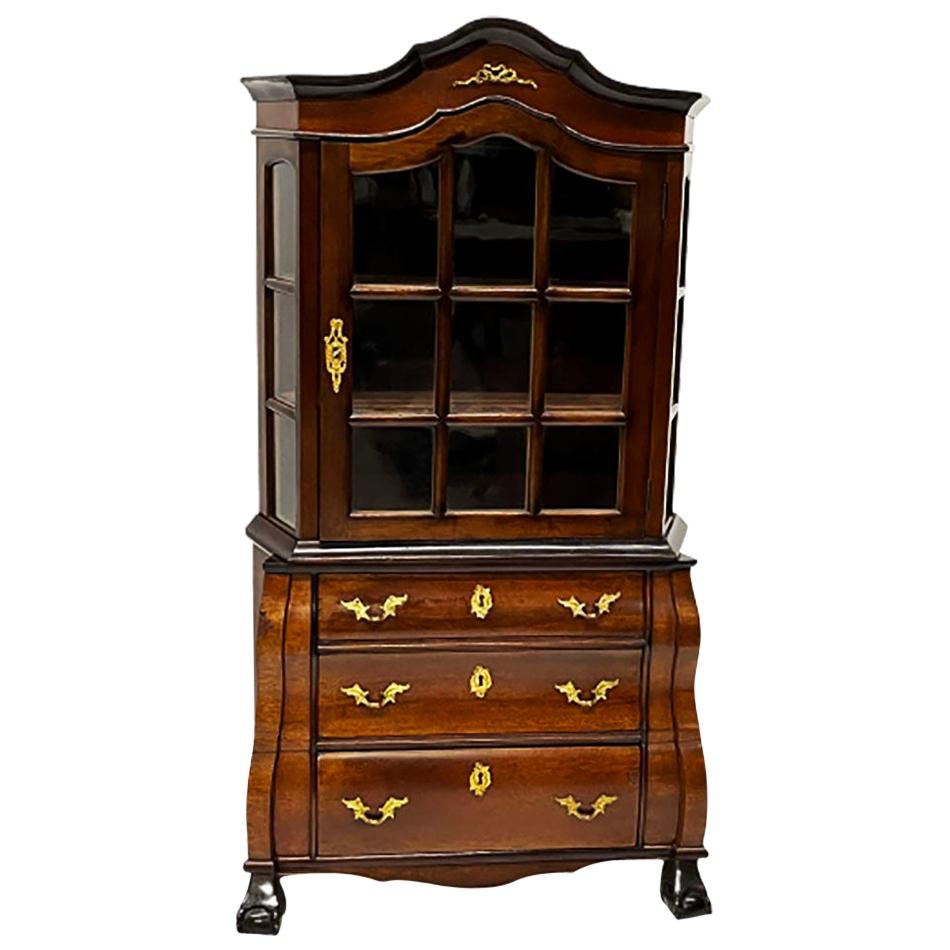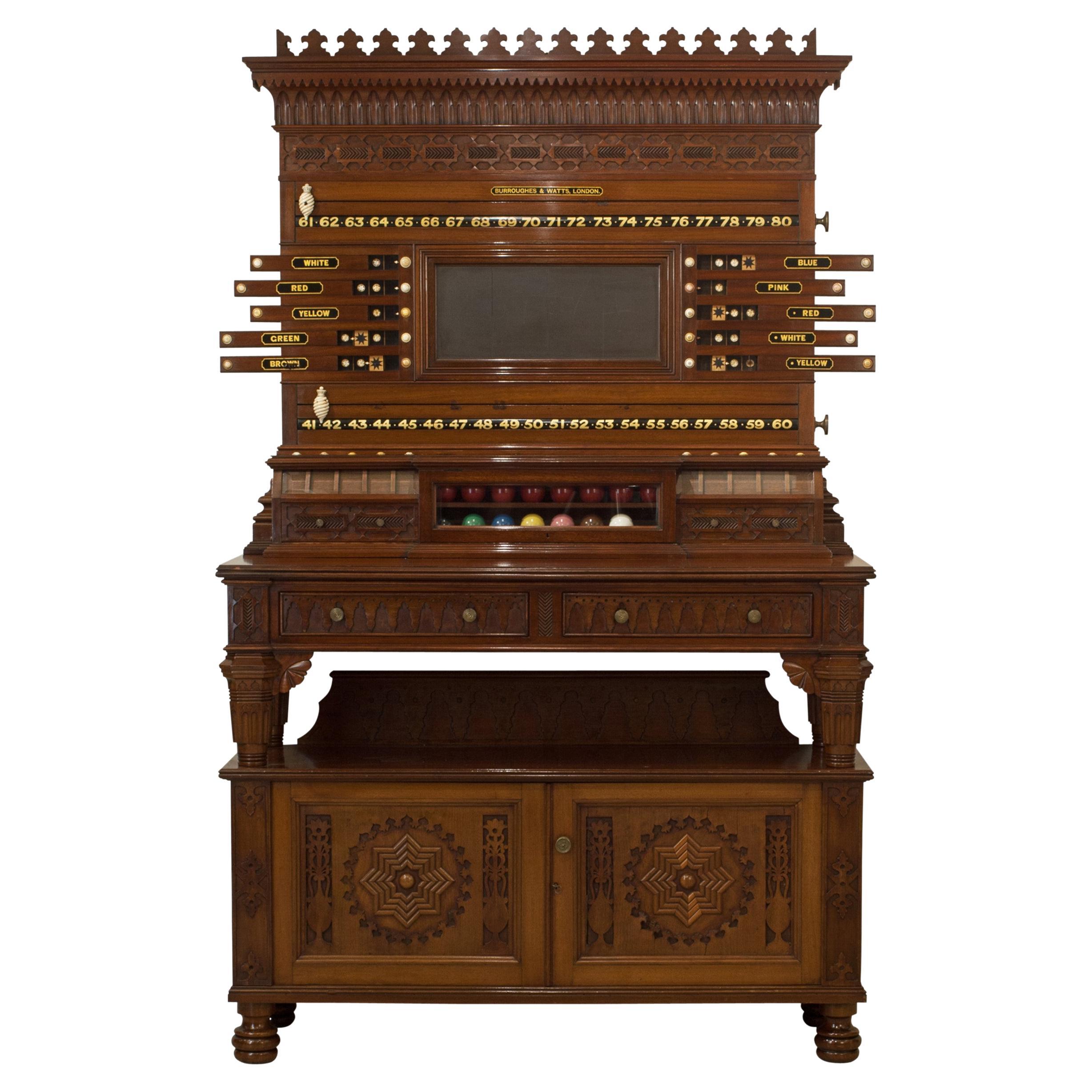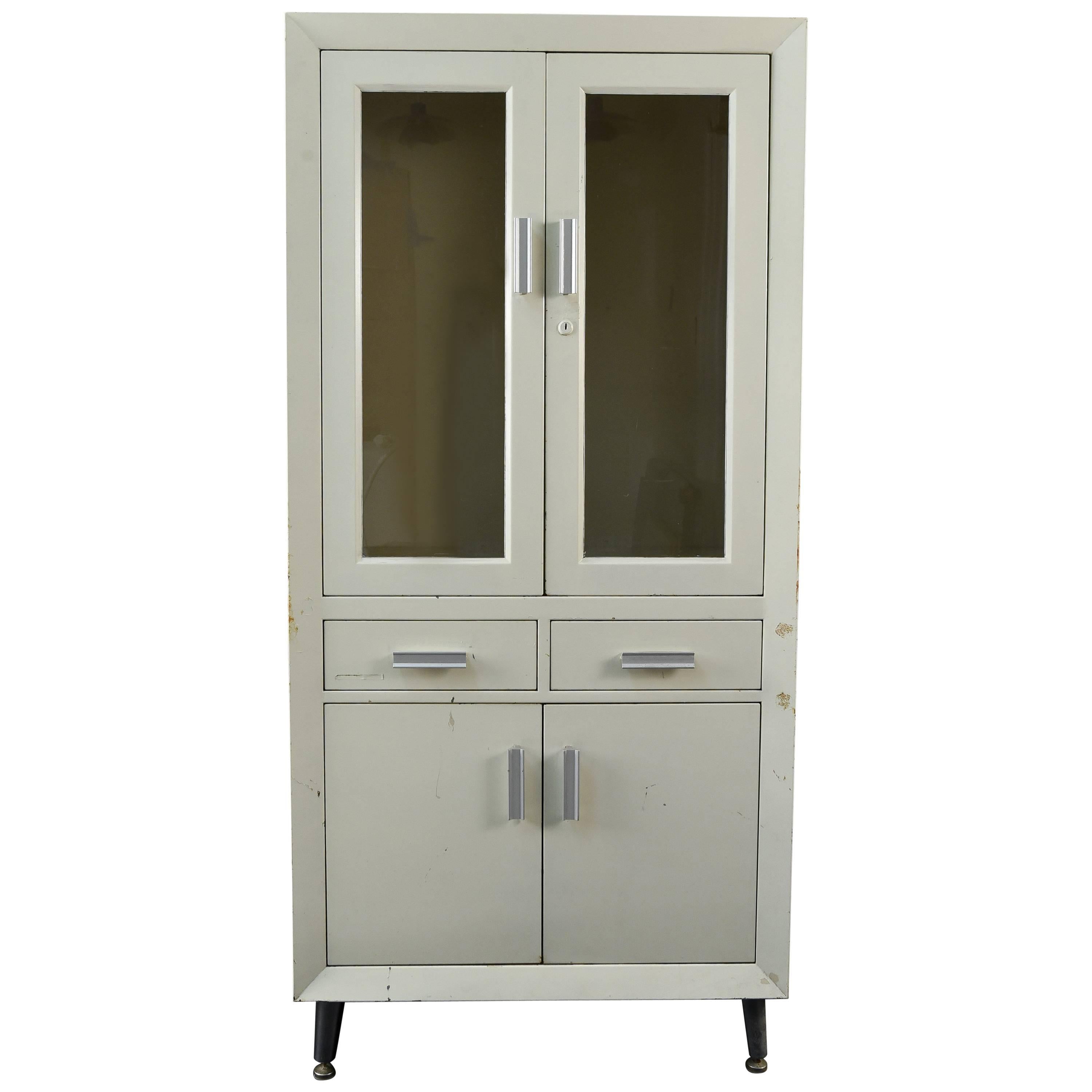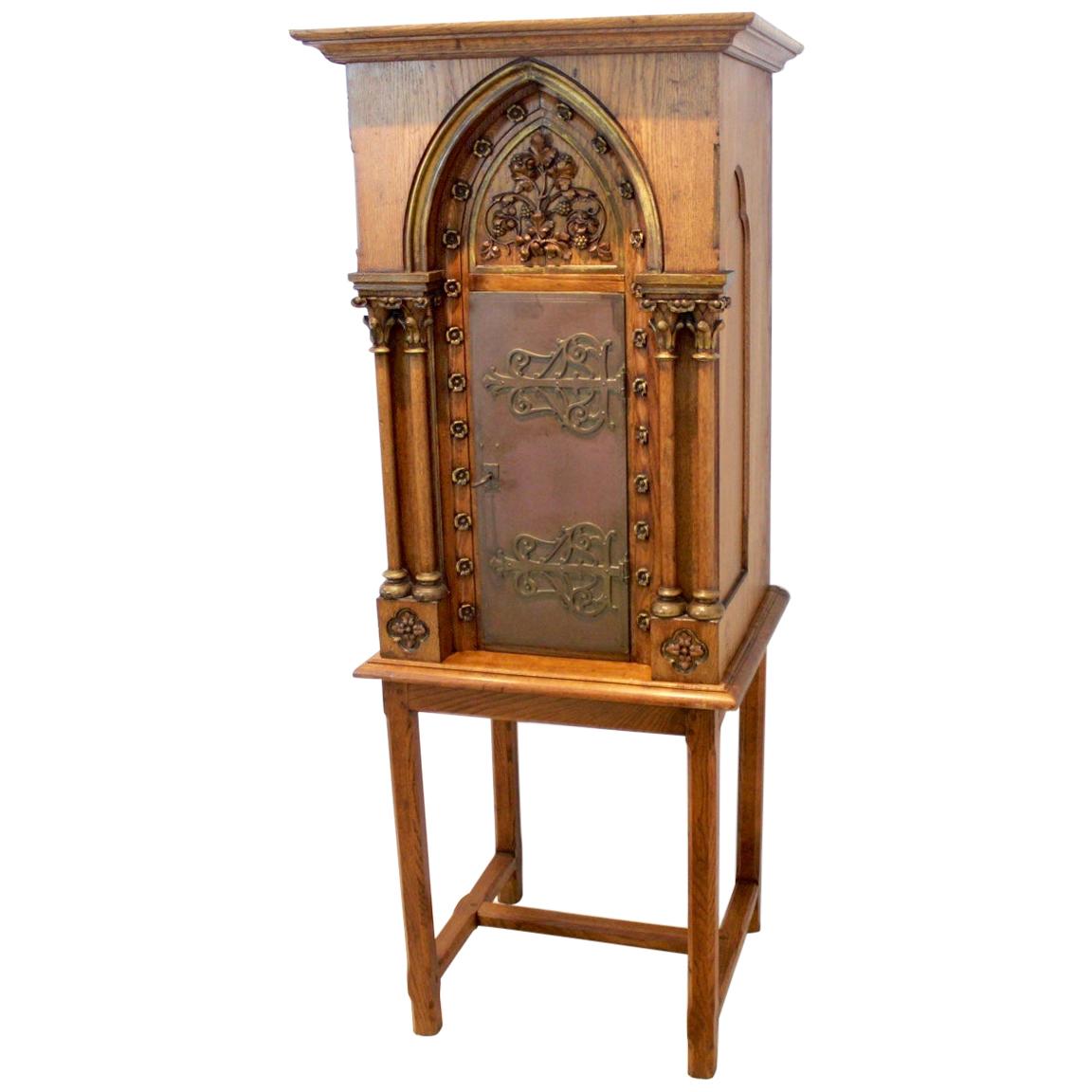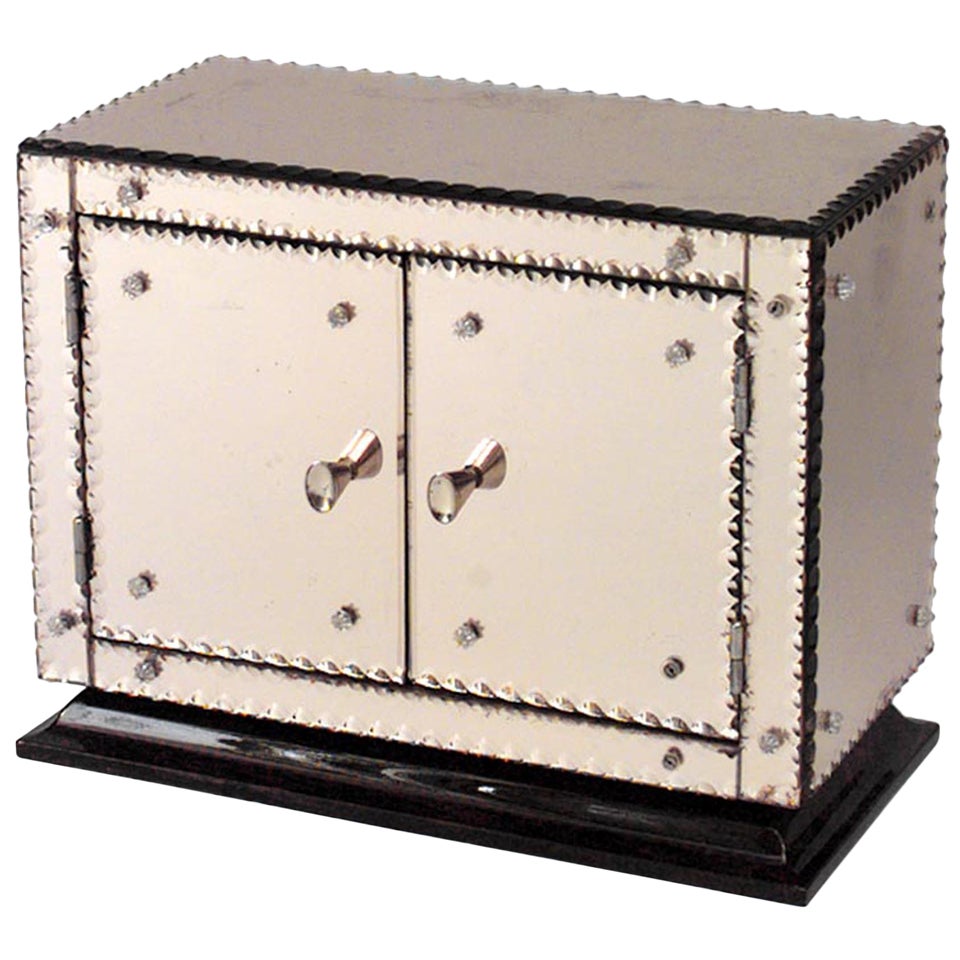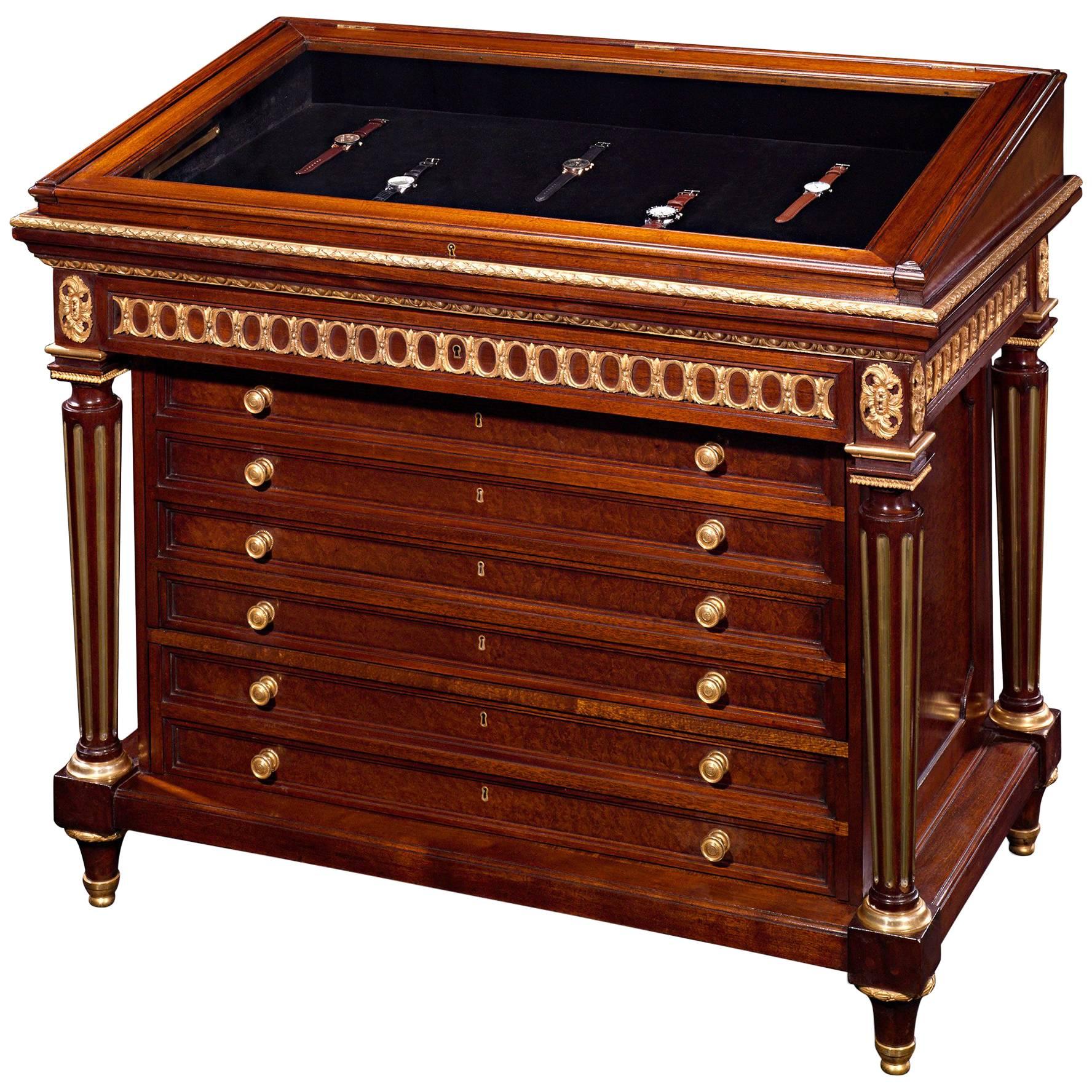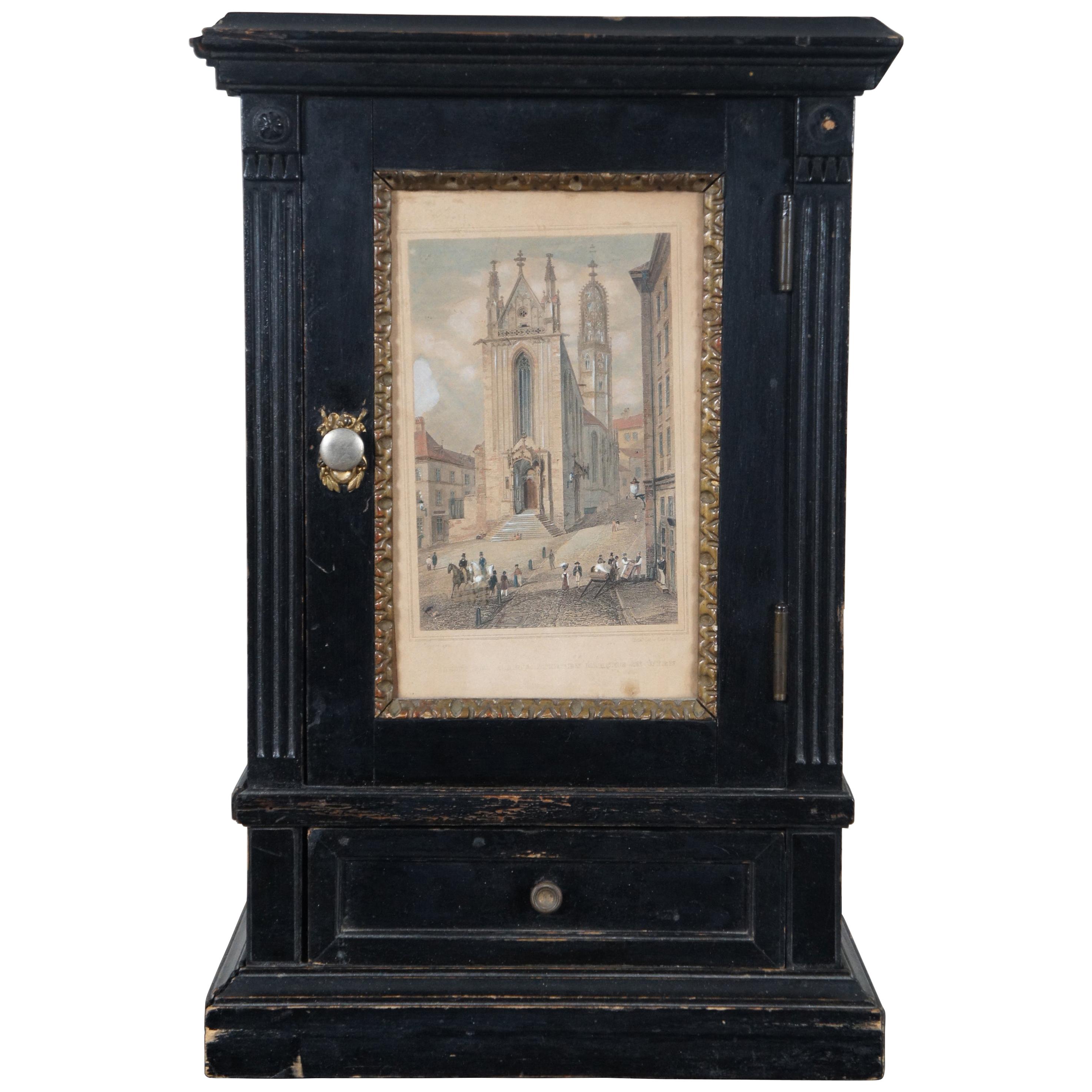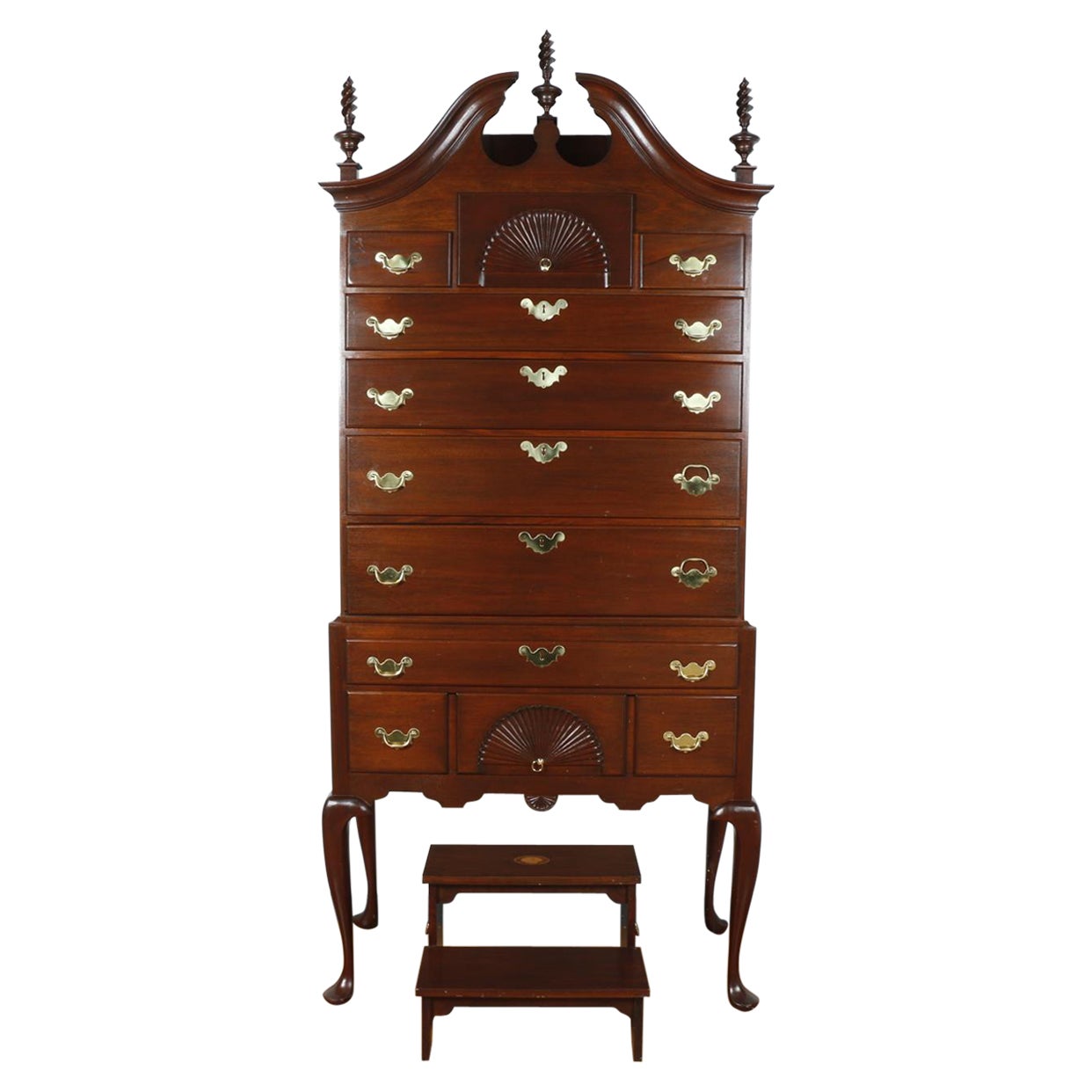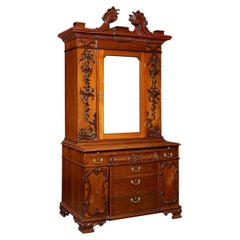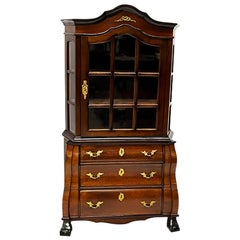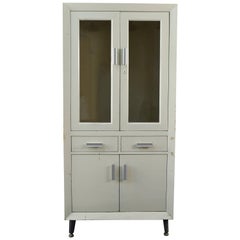
Mahogany Butterfly Cabinet
View Similar Items
Want more images or videos?
Request additional images or videos from the seller
1 of 8
Mahogany Butterfly Cabinet
About the Item
- Dimensions:Height: 53 in (134.62 cm)Width: 33.25 in (84.46 cm)Depth: 20.25 in (51.44 cm)
- Style:Other (In the Style Of)
- Materials and Techniques:
- Place of Origin:
- Period:
- Date of Manufacture:circa 1890
- Condition:
- Seller Location:New Orleans, LA
- Reference Number:Seller: 30-49711stDibs: LU891110201121
About the Seller
5.0
Recognized Seller
These prestigious sellers are industry leaders and represent the highest echelon for item quality and design.
Established in 1912
1stDibs seller since 2010
93 sales on 1stDibs
Typical response time: 7 hours
More From This SellerView All
- 19th Century Watch Winding Display CabinetLocated in New Orleans, LAThis incredible, one-of-a-kind watch display cabinet brings together the beauty of an antique with the functionality of modern technology. Crafted of mahogany, this 19th century jewelry display cabinet...Category
Antique 19th Century Unknown Empire Cabinets
MaterialsMahogany
- Mahogany Upright Cane CabinetLocated in New Orleans, LAClassical style and impeccable design distinguish this English upright cane cabinet. Crafted of lustrous Cuban mahogany, this case is comprised of a beautifully paneled door which op...Category
Antique 19th Century English Cabinets
MaterialsBrass
- Mahogany Bureau Cabinet After Thomas ChippendaleBy Thomas ChippendaleLocated in New Orleans, LAThis extraordinary Irish bureau cabinet was crafted based on a design for a desk and bookcase drawn from Thomas Chippendale’s famed 1762 edition of The Gentleman and Cabinet-Maker's ...Category
Antique 18th Century Irish Chippendale Cabinets
MaterialsMirror, Mahogany
- Hupfeld Phonoliszt-Violina Model B Music CabinetLocated in New Orleans, LAThis incredible Hupfeld Phonoliszt-Violina Model B music cabinet is among the rarest and most advanced automatic music players of its time. The remarkable machine, crafted by renowned Leipzig firm of Ludwig Hupfeld, is one of the most mechanically complex music players ever made, boasting three self-playing violins accompanied by a self-playing piano. Once made in the 1000s to entertain patrons of upscale hotels, restaurants, and cafes, these extraordinary machines...Category
20th Century German Other Musical Instruments
MaterialsWood
- English Upright Cane CabinetLocated in New Orleans, LAThis English cane cabinet exhibits classical style and impeccable design. Crafted of lustrous Cuban mahogany, this upright case features a beautifully paneled door which opens to rev...Category
Antique 19th Century English Cabinets
MaterialsBrass
$28,500 - King George I Ambassadorial Secrétaire-CabinetLocated in New Orleans, LAThis highly important secrétaire-cabinet was crafted for and specially ordered by King George I for the British Ambassador to Russia. From its craftsmanship and materials to its exceptional artistry, it is a work of royal and historic significance that exudes power in each and every detail. The broken pediment at its apex features the simplified royal coat of arms bearing the king’s crown, while the interior is adorned by portraits of the British Royal Family. Placed within the ambassador’s St. Petersburg home, this entirely unique piece of furniture would have been a potent reminder of England's grandeur and political importance. Relations between England and Russia during this period were at an all-time high. Peter the Great had traveled to England in 1698 as part of his widely known “Grand Embassy” tour, wherein he attempted to gain foreign support against the Ottoman Empire. He spent a period of nearly four months there, meeting with King William III and his court on numerous occasions. Noted academic Arthur MacGregor wrote concerning the impact of the trip, “For two decades following Peter's visit, British influence in Russia reached a peak. It manifested itself in social custom, in craft practice and in ships and naval organization... it reached a significant sector of the population before relations cooled once again and the two nations pulled back from this era of unprecedented cordiality.” First and foremost, however, it is a reminder of British might and influence. By the reign of King George I, England had come into its own as a world power. Unique in its design, this cabinet is a reflection of the country’s might. It is crafted from the highest-quality solid walnut and burr walnut adorned by gilded lock plates and engraved hinges. The presence of ormolu at its apex and lining the doors was a rarity for this period, and its addition makes manifest the importance of the design. The outer doors open to reveal multiple interiors, including fifteen separate drawers around a central cupboard; the cupboard doors each bear mezzotint portraits of George I and his father, Ernest Augustus, Elector of Hanover. An etching after the portrait of George I dating to circa 1716 is in London’s Royal Academy. A second, inner pair of doors are adorned by mezzotints of the Prince and Princess of Wales (later Queen Caroline and George II), which are both after portraits by Sir Godfrey Kneller dated 1716 in the Royal Collection. A final portrait is revealed on the very interior of the cabinet, where a mezzotint of Frederick, Anne, Amelia and Caroline, children of the Prince of Wales, resides. An etching (circa 1715-1720) after this portrait can be found in the National Portrait Gallery (London). Apart from its abundance of royal portraiture, the cabinet features stunning painted decoration, including floral designs as well as clouds, birds and trees in a bucolic motif reminiscent of Eden. Its lower portion is a study in both form and function, featuring a fitted secrétaire-drawer above three additional drawers for storage. The cabinet appears in The Shorter Dictionary of English Furniture by R. Edwards from 1964, a text that is regarded as the bible of British furniture design. Edwards describes it as a “writing cabinet...given by George I to the British Ambassador at the Russian court.” The cabinet was likely made for the 18th-century German diplomat and writer Friedrich Christian Weber, who represented English interests at the Russian court from 1714 until 1719. Although Weber’s tenure as ambassador was relatively short, while in St. Petersburg, he authored his account entitled Das veraenderte Russland (The Present State of Russia), which was published in three volumes in 1721, 1739 and 1740. It may, however, also have been made for George Douglas, 2nd Earl of Dumbarton, who served as ambassador alongside Weber in 1716. Diplomatic relations ceased between the two countries in 1721. In 1928, the cabinet appeared for sale at the International Exhibition of Antiques & Works of Art in Olympia. It had previously been in the collection of the Woltner family of Bordeaux, the celebrated vintners who owned the estate Château Laville Haut-Brion and produced wine of the same name. According to the family, Monsieur Woltner was given the cabinet as a gift from an aunt who lived in Russia for many years. After leaving the Woltner collection, the cabinet was acquired by William Berry...Category
Antique 18th Century English Georgian Secretaires
MaterialsBrass
You May Also Like
- 19th C Miniature Dutch Mahogany Display CabinetLocated in Delft, NLA 19th C miniature Dutch mahogany display cabinet, 104 cm high A Dutch mahogany display cabinet made of 1 whole piece with 3 drawers and behind the glass door 2 shelves. The shelves are covered with velour. A piece of work by an apprentice furniture...Category
Antique 19th Century Dutch Models and Miniatures
MaterialsBronze
- Antique Billiard, Snooker Score Board, Cabinet in MahoganyLocated in Oxfordshire, GBBurroughes & Watts Billiard Buffet Style Scoreboard, Life Pool. An exceptionally high quality, imposing billiard scoreboard by Burroughes and Watts of London, made in three...Category
Antique 1890s English Sports Equipment and Memorabilia
MaterialsMahogany
- 1960s Industrial Medical CabinetLocated in Norwalk, CTThis is a great medical cabinet from the 1960s, ready to keep all your goodies safe this is a great 1960s accent item that is sure to be a one of a kind addition to your decor!Category
Vintage 1960s American Mid-Century Modern Scientific Instruments
MaterialsMetal
$1,550 Sale Price20% Off - Sophisticated Oak Church Tabernacle CabinetLocated in Voorburg, NLSophisticated, respected and solid Tabernacle remaining from a Church. Completely made in oak, only the door is made of solid steel. A tabernacle is a fixed, locked box or cabinet in...Category
Early 20th Century German Historical Memorabilia
MaterialsSteel
- French Mid-Century Mirrored Miniature CabinetLocated in New York, NYFrench Mid-Century (1940s) pink mirrored rectangular miniature cabinet with 2 doors and bevelled trim on lacquered base with mahogany interiorCategory
Vintage 1940s French Art Deco Models and Miniatures
MaterialsLacquer, Mahogany
- Victorian Oak Billiard, Lifepool Scoreboard with CabinetLocated in Oxfordshire, GBSnooker, Billiards & Life pool scoreboard attributed to Thurston & Co. A nice combined Victorian billiards and life pool scoreboard made of light oak. The billiard scorer sits upon a lockable ball cabinet that can house 32 balls, which then sits upon a cupboard. The cupboard comprises of two drawers, a pair of panelled doors enclosing a shelf, the cupboard raised on a plinth base. The scorer comprises of two blue rollers with gilt painted numbers, 0 to 20 / 20 to 40 / 40 to 60 / 60 to 80 / 80 to 100, with two ebony slides to mark your score, one spot and one plain. The Life Pool board consists of 12 slides with coloured discs, each colour representing the player's cue ball and the order of play. The colours of the discs being blue, brown, green, white, red, yellow, black, pink, spot orange, spot white, spot red and spot yellow. When each slide is pulled back 3 boxwood discs are revealed, one for each life of the player. There are also "stars" hiding, and these are used as extra lives. In the middle of the scoreboard there is a slate board for keeping scores etc. The game of Life Pool can be played by a number of players, a maximum of 12 players with this scoreboard, who form the pool. Each player has their own coloured ball and loses a life each time the ball is potted by an opponent. When three lives...Category
Antique 1880s British Sports Equipment and Memorabilia
MaterialsOak
Recently Viewed
View AllMore Ways To Browse
Antique Colored Kitchen Cabinets
19th Century Curio Cabinet
King George Cabinet
Antique Curio Display Cabinet
Marquetry Butterfly
George Iii Display Cabinet
Art1 Nouveau Cabinet
Moth Display
Mahogany Curio
Specimen Collectors Cabinet
Curio Cabinet Mahogany
Specimen Display Cabinet
Antique Style Curio Cabinet
Antique Mahogany Curio Cabinet
Double Curio
Art Nouveau Antique Cabinets Art 20nouveau Cabinets
Art Nouveau Antique Doors Art 20nouveau Doors
Double Curio Cabinet
